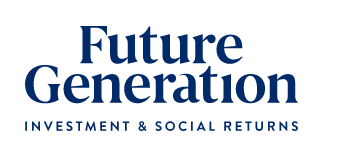This interview article has been written by an expert contributor Future Generation. First published 14/12/2022.
Can you describe WCM’s investment style?
The way we approach investing is to take a long-term time horizon and build concentrated, high conviction portfolios in growth sectors of the market. We have 35-40 stocks and we’re typically overweight areas that we think are going to grow sustainably over decades to come, like healthcare and technology.
Were you hit badly by the so-called Tech Wreck?

We were obviously not immune. But the market sell-off in 2022 has really been a response to rising interest rates, which are attempting to halt inflation in prices across multiple industries. In fact, many people have described this year’s equity market activity as one where there was no place to hide. There wasn’t one single area that was a broadly positive contributor to the year.
Is it time for investors to get back into tech stocks?
Timing the market is a near impossible task. Picking the bottom of the market (or picking the top for that matter!) is a fool’s errand. Instead, we take a long-term time horizon and make sure that for any company in our portfolio, we can make the case that its opportunity set is strong and that its competitive advantage will grow over a 5-year-plus timeframe.
Volatility will happen, markets will have their ups and downs. But in order to generate excellent long-term returns, you need to have patience and the courage to stick through difficult periods. So, I would argue any time is a good time to invest in equities. You just need to make sure that you respect your own risk tolerance and that you have a long-term horizon. If you try to pick a specific date, you’ll inevitably be wrong.
What does the current global investment landscape look like to you?
The opportunity set is rich because, as I mentioned, the valuation compression has occurred very broadly across the marketplace. In the areas that we’re excited about – healthcare, technology, some consumer, and industrials – we’re finding businesses that are exhibiting excellent operating performances on a quarter-by-quarter basis and that are getting better versus their peers. Eventually, the market will reflect the strength of these businesses in their share prices.

We’ve been approaching this opportunity set with a blank-sheet-of-paper-style of thinking. We’ve been asking ourselves, “What are truly our best 35-40 ideas over the 5-year-plus time horizon?” Having just lived through a supportive growth market, we’re now looking at the future environment and trying to understand which businesses can get better in a higher rate environment and which businesses can sustain any flavour of recession, whether it’s a deep recession or a touch-and-go recession.
We’re not trying to predict what that environment is going to be, exactly, but we want to select companies that are going to grow durably through a period of headwinds.
What type of tech companies do you like?
The businesses we like could be described as pick-and-shovel businesses, which take advantage of larger trends. So, we like outsourcing companies that help businesses to remain small in their footprint, but also to grow over time; businesses that allow employees to communicate well, no matter where they are; businesses that enable the growth and consumption of higher tech, like semiconductor businesses that enable artificial intelligence or the next great cell phone; consulting businesses that help companies to get to the next level through technology; some cloud computing games; and some enterprise software businesses. So, we’re taking a fairly diversified approach to the sector.
We also tend to buy businesses that don’t rely on debt or acquisitions to grow, and which are cashflow positive on their balance sheets. So far in the tech sell-off, we’ve seen that if you haven’t shown a history of making money, or the opportunity to make money in the future, your stocks get sold off significantly worse.
How do ideas end up in your portfolio?
The core tenant we have in selecting companies is that the business is growing its competitive edge. If you think about the company’s competitive advantage as a moat, we want to see that moat expanding. The other piece of the puzzle we apply to our investments is our corporate culture work.

We have a dedicated team of business culture analysts who do work only on corporate culture; they don’t really bother with the ins and outs of the financials. They use a dedicated framework through which we analyse all our businesses to ensure they have a culture that is well-aligned, strong and adaptable to internal and external forces. The portfolio’s high concentration allows it to be a collection of investment theses, rather than an exposure to macroeconomic trends.
We feel we can achieve higher returns over time by focusing on the attributes of individual companies that allow them to get better versus their peers because that’s something you can actually have an opinion on. You can’t ignore the macro entirely. But it’s easier to make decisions from a company-by-company perspective than to try to guess exactly when the Fed will stop raising rates or for how long Russia will be at war with Ukraine.
How unusual is it for investment firms to have a team of corporate culture analysts – and why is that critical to you?
I can honestly say I don’t know of any other investment management team that has a dedicated team of culture analysts. We’re seeing the word “culture” pop up a lot more among our peers, but what differentiates our approach is that we have a dedicated framework that we’ve utilised in every corporate culture meeting for over a decade. So, we’ve got this institutional knowledge and a foundation of work that we can draw upon.
If you go to your first company and ask about their culture, they’re going to say some nice things about the business. CEOs and executives are pretty polished. But if you don’t have ways to draw information from these discussions, you can never make a quantitative decision off this qualitative piece. By having that framework in the middle, we can take all this qualitative knowledge and make quantitative decisions based on it.
Is there a correlation between a company’s culture and its long-term performance?

Yes, certainly. Corporate culture defines employee behaviour and employee behaviour supports the competitive advantage. You can’t have one without the other. When you have employees who behave in a similar fashion, with a similar goal and with similar values, it tends to lead to great business outcomes. You can own these types of businesses for a long time because they’ll know what to do in markets when they have the wind at their back, but they’ll also know what to do in difficult markets when they’re facing macro or geopolitical headwinds.
How similar is your corporate culture framework to an ESG framework?
When we look at our culture work and the way we prefer to invest, the by-product tends to make us look a bit like an ESG manager. Our corporate culture work focuses heavily on the social and governance side of things. And, because of our investment philosophy and process, we don’t tend to like energy companies, which are typically the businesses that drag ESG scores lower.
ESG has been a real hot topic for money managers, and it’s allowed some people to raise a bunch of assets just by putting it in their presentations. But, at the end of the day, the companies we invest in have to be getting better in their industries relative to their peers. They are trying to get a leg up on their competitors any way they can. And what we’re seeing is more and more companies making strong environmental, social and governance decisions in order to gain a competitive advantage over their peers, rather than as a dangling carrot for investment managers like us to buy their stocks.
What are your different investment buckets ?
Because we have a concentrated portfolio of 35-40 stocks, we need to put in some risk parameters to ensure it doesn’t become overwhelmingly volatile. We make sure that 40%-50% of the portfolio is in defensive growth stocks, with the remaining 50%- 60% split between secular growth and cyclical growth.

The cyclical growth bucket is typically 15%-25%, and the secular growth bucket is anywhere between 25%-35%. These are not hard and fast rules; we don’t have a hard framework around it. It’s just the tool we use to create a balanced portfolio for our investors. The defensive growth businesses are meant to be our anchor against the wind. They’re meant to protect capital in negative markets, because they are blue chip, bellwether growth businesses. When we look at the cyclical and secular growth buckets, we can gross them up or down based on how we’re feeling about the market in general.
At the moment, we have around 45% of the portfolio in defensive growth businesses, so that’s right in the middle of our typical range. But the secular growth bucket is at the lower end of its range, and the cyclical growth bucket is at the higher end of its range. That’s a reflection of our sense that we’re not yet through the rising rate cycle. As long as rates continue to go up, secular growth businesses will be facing headwinds. Meanwhile there is a global trend towards deglobalisation and onshoring, and many of our cyclical growth businesses will benefit from this.
What are the main lessons you’ve learned from your time in the market?
Markets tend to go up over time, so staying invested and having a steady hand are extremely important. We’ve lived through the dot.com bubble and burst, multiple recessions, a global financial crisis, multiple different wars – and the markets have continued to go up. If you panic and get out of the market, it destroys a lot of wealth creation.
Evolving over time is also really important. One of the themes of our research team is “Think Different and Get Better”. We don’t want to get stuck in one mindset or anchor to one area that’s made us successful in the past. We want to challenge ourselves constantly to think a little differently about markets and the investment environment. Thad doesn’t mean we change our philosophy and process; it just means that we understand that some things will inevitably change, and we should be prepared to change in response.

Future Generation Australia (ASX: FGX) and Future Generation Global (ASX: FGG) are Australia’s first listed investment companies to provide both investment and social returns.
The companies provide shareholders with exposure to leading Australian and global fund managers, who aim to deliver a stream of fully franked dividends and capital growth, without charging any management or performance fees. Their generosity allows the Future Generation companies to invest 1% of net tangible assets each year in their not-for-profit partners. Shareholders decide which not-for-profits will receive the donation, whether it’s supporting children and youth at risk (FGX) or investing in the prevention of ill mental health (FGG). The Future Generation companies have donated $65.2 million since inception.
Prior to making an investment decision, retail investors should seek advice from their financial adviser. This document is intended as general information only.
More About
- General
- Managed Funds
- Meet the Manager
- Technology Hardware & Equipment
- Inflation
- Future Generation
- Ryan Quinn
- Healthcare
- Semiconductors
- Growth Investing
- Portfolio Construction